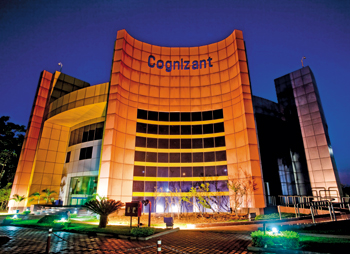
Karthik Krisnamurthy, Cognizant global business leader, enterprise information management describes the context of what he does as: "All the processes, solutions and thinking that go into insights and foresights. Taking data from legacy platforms such as SAP or other ERP platforms into a data management platform. Taking data that could be generated in warehouses or could be generated in operations and stores, through to driving business intelligence and analytics."
CBR,Q: Describe what’s to be gained?
KK, A: A significant amount of dollars. There is so much redundancy, duplication and multiple database platforms. Helping organisations deal with unstructured data. [A phrase he dislikes preferring alternately structured.]
One of the areas we’re focused on is helping organisations land big data – what’s the definition? One guy said we’ve got a big data problem. But what he meant was he had a lot of data. A ‘big’ data problem in volume terms.
Big data has suffered significantly from the wrong definition. Volume, variety, velocity are cited but value is the one which is missed out. Look at what’s happened in venture capital, until 2012, 50% of funding went into big data. And a lot of that hype was frankly pre-mature.
CBR: I’m an enterprise type customer with a big data problem – what are your skill sets? Why am I coming to you not an alternative expert?
KK: What we bring is fundamentally an industry based approach. It is not a platform play. It is a business solutions play. Big data for finance is different from that for life sciences. We help them understand the art of what’s possible from an industry specific analytic value stand point. That approach differentiates us.
Many big data journeys fall apart after one year. Look at companies that embark on the strategies. The first year is spent on technical use cases – usually optimise your data environment. We take some of the RDMS data and accelerate that and reduce data infrastructure. The play is to sell them a five year road map and in year one start talking about things in that the business is not going to see.
And what happens? At the end of the first year everyone becomes disillusioned and it scuttles the big data re-organisation. I know many finance houses that have spent too long on big data technical use cases.
CBR: What is your approach?
KK: We have an assessment framework based on big data analytics usefulness.
CBR:How difficult is it to convince the client that there is an opportunity around analytics?
KK: It is difficult unless you relate it to revenue. You ‘d be amazed how many enterprises buy into revenue use cases. Agility and speed is relative, so not always relevant. Relate it to revenue opportunities. If you can show that existing data sources throw up those opportunities you can convince them to invest.
CBR: Why is it different from Business Intelligence?
KK: Business Intelligence [proponents] made a mistake. The mistaken belief was that what we build- gets used while actual adoption of BI is 11%. To me the goal is shift that. That’s the remaining 80-90% of BI which hasn’t been related to business value.






